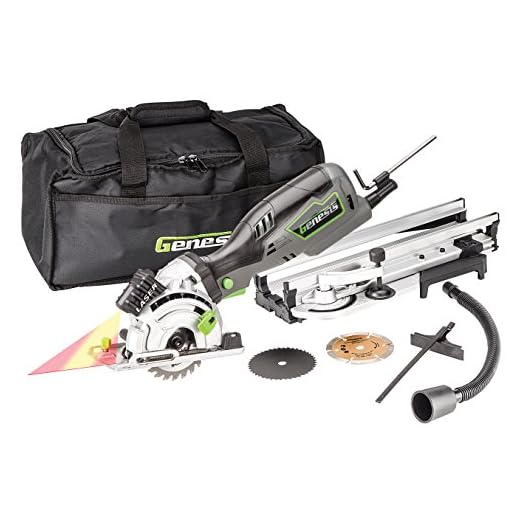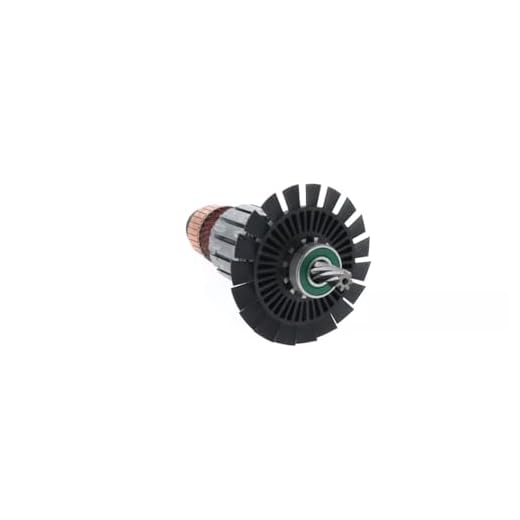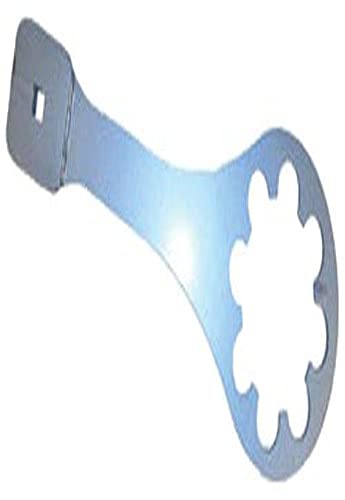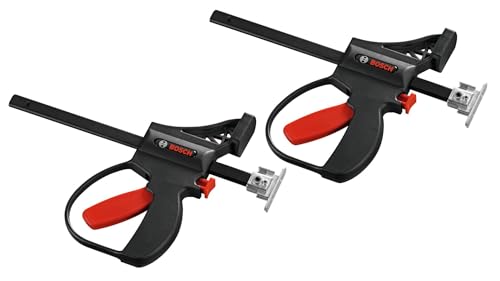




If you have noticed sparks coming from your circular saw motor, it can be a cause for concern. Sparks are not a normal occurrence and can indicate a problem with your tool. Understanding the reasons behind this issue can help you address it promptly and prevent further damage to your saw.
One possible cause of sparking in a circular saw motor is a worn or damaged armature. The armature is a crucial component of the motor that helps generate the power needed to spin the saw blade. Over time, the armature can become worn out or damaged due to regular use, age, or excessive heat. When this happens, the coils within the armature may begin to rub against each other, creating sparks. Ignoring this issue can lead to further damage and potential failure of the motor.
Another potential reason for sparking in your circular saw motor is a faulty or damaged brush. The brushes are responsible for transferring electrical current to the armature, allowing it to spin. If the brushes are worn out, dirty, or damaged, they may not make proper contact with the armature, resulting in sparks. It is important to regularly inspect and clean the brushes to ensure they are functioning correctly. Replacing them when necessary can help prevent sparking and maintain optimal motor performance.
Common causes of sparking in circular saw motors
Sparking in circular saw motors can be a cause for concern as it may indicate a potential problem that needs to be addressed. There are several common causes of sparking in circular saw motors that should be taken into consideration.
1. Worn or damaged brushes
One of the most common causes of sparking in circular saw motors is worn or damaged brushes. The brushes in a circular saw motor are responsible for delivering electrical current to the spinning armature. Over time, the brushes can become worn down or damaged, resulting in poor contact with the armature and increased sparking.
Regular inspection and replacement of brushes when necessary is important to maintain proper functioning of the motor and reduce sparking. Brush replacement is typically a straightforward task that can be done by following the manufacturer’s instructions.
2. Loose or damaged wiring
Anoher common cause of sparking in circular saw motors is loose or damaged wiring. Loose or frayed wires can create erratic electrical connections, leading to sparking. Exposure to moisture or excessive heat can also cause wiring to deteriorate or become damaged.
It is important to regularly inspect the wiring in the circular saw motor for any signs of damage or loose connections. If any issues are found, the wiring should be repaired or replaced as soon as possible to prevent further sparking and potential safety hazards.
3. Overheating
Overheating can also cause sparking in circular saw motors. Excessive heat can cause the components of the motor to expand, which can lead to increased friction and sparking. This can be caused by prolonged or heavy use of the circular saw, as well as environmental factors such as high ambient temperatures.
To prevent overheating and sparking, it is important to ensure proper ventilation and cooling of the motor. This can be achieved by using the circular saw in a well-ventilated area, allowing for sufficient airflow around the motor. Avoiding prolonged, continuous use of the saw without breaks can also help prevent overheating.
In conclusion, sparking in circular saw motors can be caused by several factors, including worn or damaged brushes, loose or damaged wiring, and overheating. Regular maintenance and inspection of the motor can help identify and address these issues, ensuring safe and efficient operation of the circular saw.
How to prevent sparking in circular saw motors
Sparking in circular saw motors can be a common issue that may affect the performance and lifespan of your tool. By following a few preventive measures, you can avoid sparks and ensure the longevity of your circular saw motor:
1. Check the power supply
Ensure that your circular saw is connected to a stable power supply. Fluctuations in voltage can cause sparks and damage the motor. Use a reliable outlet or consider using a surge protector to safeguard against power surges.
2. Keep the motor clean
Dirt, dust, and debris can accumulate in the motor over time and cause it to spark. Regularly clean the motor housing and vents using compressed air or a soft brush. This will prevent debris from interfering with the motor’s operation.
3. Inspect the brushes
The brushes in a circular saw motor play a crucial role in conducting electricity. Over time, they can wear down, become dirty, or get stuck. Check the condition of the brushes periodically and replace them if necessary. Properly functioning brushes reduce the likelihood of sparking.
4. Lubricate moving parts
Frequently lubricate the moving parts of your circular saw motor, such as bearings and gears. Lack of lubrication can increase friction, leading to overheating and sparking. Refer to the saw’s manual to identify the appropriate lubricant and procedure for lubrication.
5. Use the correct blade
Selecting the right blade for your circular saw is essential to prevent sparking. Ensure that the blade is compatible with your saw’s specifications and the material you will be cutting. A dull or damaged blade can cause excessive friction, resulting in sparks.
By following these preventive measures, you can significantly reduce the chances of sparking in your circular saw motor. Regular maintenance and proper care will ensure that your saw performs optimally for years to come.
Maintenance tips for reducing sparking in circular saw motors
Sparking in circular saw motors can be a common issue, but with proper maintenance, you can reduce or even eliminate this problem. Here are some tips:
1. Clean the motor regularly: Dust, debris, and sawdust can accumulate in the motor, leading to increased friction and sparking. Use a soft brush or compressed air to clean the motor regularly, especially after heavy use.
2. Check the brushes: The brushes in the motor can wear down over time, leading to poor contact and increased sparking. Inspect the brushes regularly and replace them if they appear worn or damaged.
3. Ensure proper alignment: Misalignment of the blade or motor can cause excessive friction and sparking. Check and adjust the alignment of the blade and motor according to the manufacturer’s instructions.
4. Lubricate moving parts: Lubrication can reduce friction and prevent sparking. Apply a small amount of oil or lubricant to the moving parts of the motor, such as the bearings and gears, as recommended by the manufacturer.
5. Use the right blade: A dull or incorrect blade can cause the motor to work harder, leading to increased sparking. Make sure you are using a sharp, properly-sized blade that is suitable for the material you are cutting.
6. Avoid overheating: Overheating of the motor can increase the likelihood of sparking. Allow the motor to cool down after heavy use, and avoid pushing the saw beyond its recommended limits.
7. Inspect the power supply: Check the power cord and plug for any damage or loose connections. Faulty or inadequate power supply can cause the motor to spark. If you notice any issues, have them repaired or replaced by a qualified electrician.
8. Seek professional help: If the sparking issue persists despite proper maintenance, it may indicate a more serious problem with the motor. In such cases, it is advisable to consult a professional technician or contact the manufacturer for assistance.
By following these maintenance tips, you can reduce sparking in circular saw motors and ensure smooth and safe operation.
Signs that indicate a problem with your circular saw motor
A circular saw motor is an essential component of a circular saw that powers the blade and allows it to cut through various materials with precision. However, over time, the motor can develop problems that hinder its performance and reliability. Here are some signs that indicate a problem with your circular saw motor:
1. Sparking
One of the most noticeable signs of a motor problem is sparking. If you see sparks coming from the motor, it can indicate worn-out brushes, a loose connection, or a short circuit. It is crucial to address this issue promptly to prevent further damage to the motor and ensure your safety.
2. Overheating
If your circular saw motor is overheating quickly, it may be a sign of a problem. Overheating can be caused by a faulty cooling system, a clogged ventilation system, or overuse of the saw. Continuing to use an overheating motor can lead to irreversible damage, so it’s important to investigate and resolve the issue.
3. Strange noises
Unusual and loud noises coming from the motor, such as grinding, screeching, or clunking sounds, are indications of a problem. These noises can be caused by worn-out bearings, damaged gears, or misalignment. Ignoring these sounds can result in further damage to the motor and affect the saw’s performance.
If you notice any of these signs or experience other irregularities with your circular saw motor, it is recommended to stop using the tool and have it inspected by a professional. Attempting to use a faulty motor can put your safety at risk and result in costly repairs or replacements.
Safety precautions when using a circular saw with a sparking motor
Using a circular saw with a sparking motor can be dangerous if proper safety precautions are not followed. Sparks from the motor can indicate a variety of issues, such as a loose wire, worn brushes, or a faulty switch. To minimize the risk of injury or damage, it is essential to take the following safety precautions:
1. Wear appropriate safety gear: Always wear safety glasses, gloves, and ear protection when operating a circular saw. Sparks can fly in unpredictable directions, and wearing safety gear ensures that your eyes, hands, and ears are protected from potential hazards.
2. Inspect the saw before use: Before each use, inspect the circular saw for any visible damage or loose parts. Check the power cord and ensure it is in good condition. If you notice any issues, do not use the saw until it is repaired or replaced.
3. Disconnect the saw from the power source: Before performing any maintenance or adjustments, always disconnect the circular saw from the power source. This will prevent accidental activation of the saw, which could result in serious injury.
4. Avoid cutting conductive materials: If your circular saw motor is sparking, it is best to avoid cutting conductive materials such as metal or wet wood. These materials can increase the likelihood of sparks and electrical shock. Stick to cutting non-conductive materials until the issue with the motor is resolved.
5. Seek professional assistance: If your circular saw motor continues to spark, even after following safety precautions and conducting basic troubleshooting, it is recommended to seek professional assistance. A qualified technician will be able to diagnose and fix any underlying issues safely.
Remember, safety should always be the top priority when using power tools. Taking the necessary precautions can significantly reduce the risk of accidents and injuries.
When to seek professional help for a circular saw motor that sparks
If you notice that your circular saw motor is sparking, it is important to take action immediately. While some sparks may be harmless and normal, excessive or persistent sparking can be a sign of a bigger problem. In such cases, it is recommended to seek professional help to diagnose and fix the issue.
Here are some situations when you should consider contacting a professional:
- Excessive sparking: If you observe sparks occurring frequently or in large amounts, it may indicate a serious issue with the motor or electrical connection.
- Burning smell: If you notice a burning smell along with sparking, it could be a sign of overheating or electrical malfunction.
- Loss of power: If your circular saw is experiencing a sudden loss of power along with sparking, there may be an underlying problem with the motor or electrical components.
- Unusual noises: If the saw motor is making unusual noises in addition to sparking, it is best to have it inspected by a professional. This could be a symptom of damaged or worn-out parts.
- Inexperienced with repairs: If you are unfamiliar with electrical repairs or lack the necessary skills and tools, it is always safer to seek professional assistance to avoid any accidents or further damage.
Remember, electrical issues can be dangerous and attempting to fix them without proper knowledge and expertise can lead to serious injuries or damage to the saw. By consulting a professional, you can ensure that the problem is diagnosed correctly and resolved safely, allowing you to continue using your circular saw with peace of mind.





